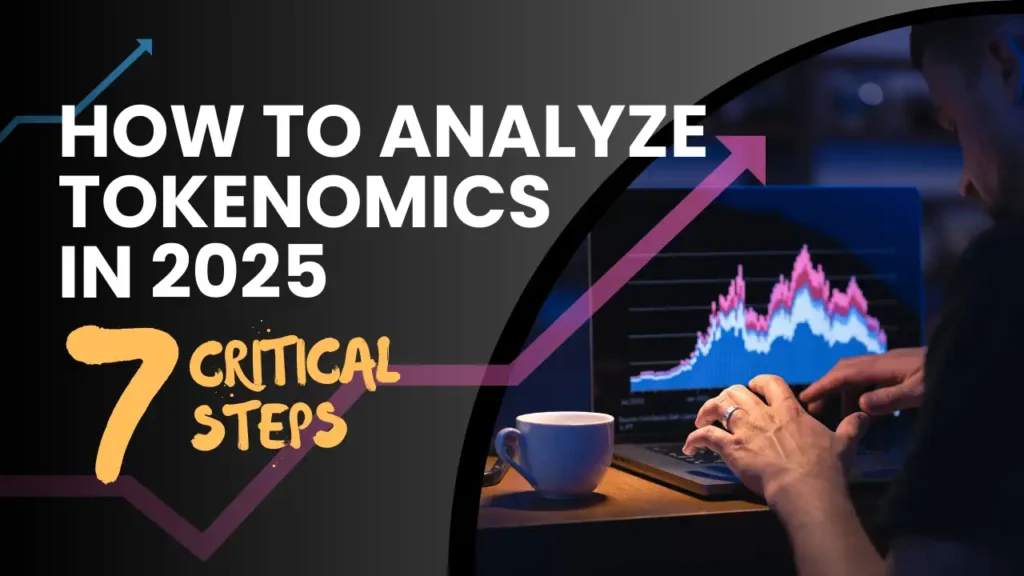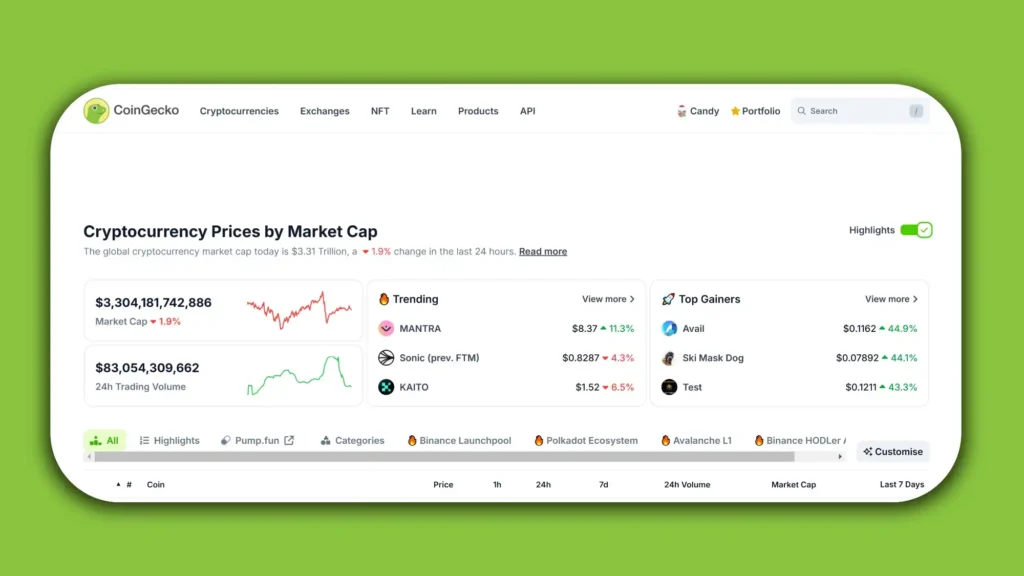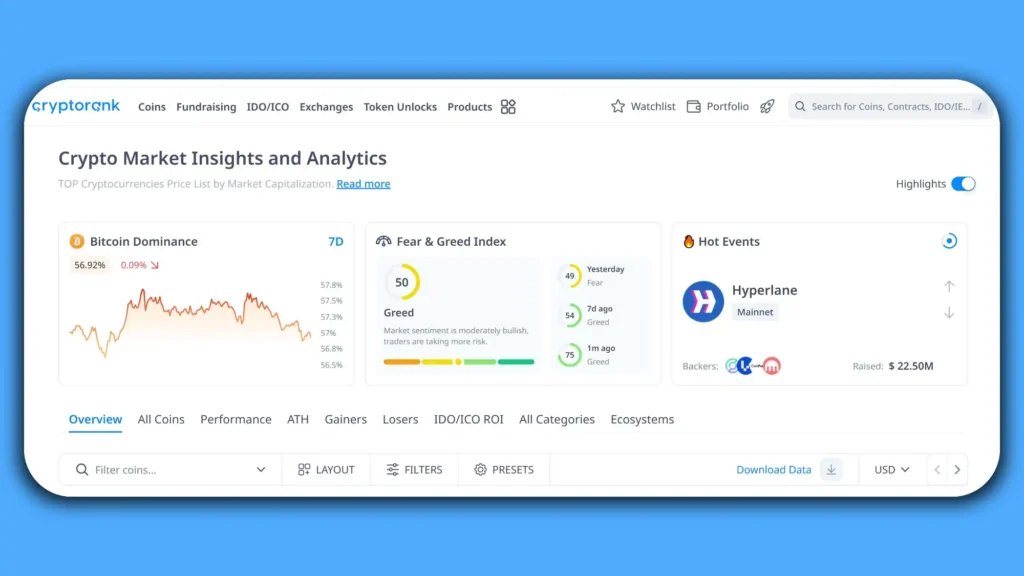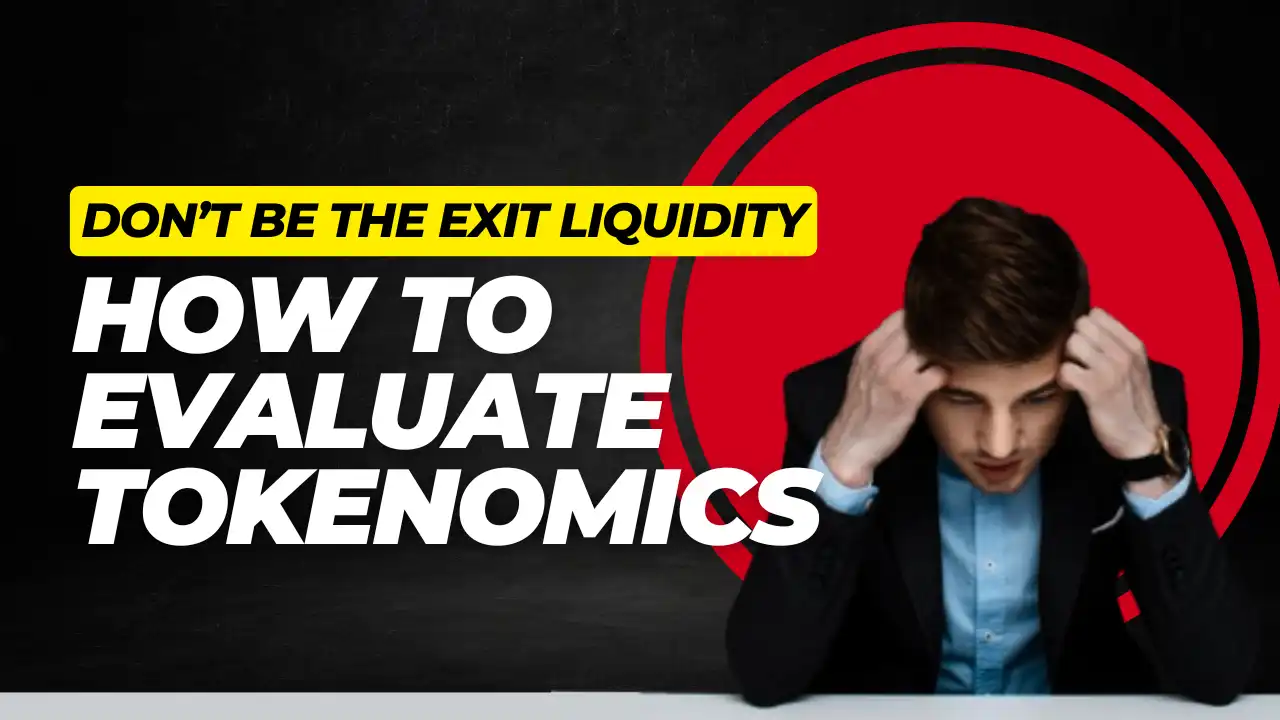Don’t Be the Exit Liquidity (2025 Edition)
How Can Tokenomics be evaluated Effectively? The answer is in the question: “Who benefits, and how?” Scrutinize supply (total vs. circulating, inflation rates), distribution (avoid projects where insiders/VCs own >30%), and utility (governance, staking, fees—no use case = red flag).
Check vesting schedules for team/VC tokens—mass unlocks often trigger dumps—and demand drivers like burns or rewards.
Compare market cap (current value) to fully diluted valuation (FDV) to spot future dilution risks. Tools like CoinGecko or TokenUnlocks help, but trust your gut: if tokenomics feel rigged (e.g., Terra Luna’s algorithmic chaos) or rewards hinge on hype, walk away.
Strong tokenomics, like Bitcoin’s fixed supply or Ethereum’s staking incentives, align long-term growth with fairness.
Let’s get real for a second. You’ve probably fallen into the same trap I have: scrolling through crypto Twitter, stumbling on a project with a flashy website and a charismatic founder, and thinking, “This is it. This is the next Bitcoin.” Fast-forward six months, and the token’s price has flatlined. What went wrong? Nine times out of ten, the answer is hiding in plain sight: tokenomics.
Tokenomics isn’t just jargon. It’s the soul of a cryptocurrency. Imagine building a car with a Ferrari engine but no steering wheel—that’s a project with bad tokenomics. It might look impressive, but it’s going nowhere. By 2025, as AI, regulation, and DeFi 2.0 reshape crypto, evaluating tokenomics isn’t just important—it’s survival.
This guide is different. No robotic jargon. No cookie-cutter advice. Just straight talk from someone who’s made (and learned from) every mistake in the book. Let’s break it down.
Table of Contents
Why Tokenomics Is Like a Relationship (And Why You Don’t Want a Toxic One)

Think of tokenomics like dating. You wouldn’t marry someone without knowing their values, right? The same logic applies here. A project might dazzle you with tech jargon or promises of 100x returns, but if its tokenomics are selfish, shortsighted, or greedy, it’ll leave you heartbroken.
Take my early days in crypto. I invested in a DeFi project with a “revolutionary” yield farming model. The team? Rockstars. The tech? Solid. The tokenomics? A dumpster fire. The developers had allocated 40% of the tokens to themselves, released all of them within a year, and vanished. Poof. My investment? Down 95%.
The moral of the story: Tokenomics is where love stories or horror movies begin. Let’s make sure you’re swiping right on the right projects.
How to Analyze Tokenomics in 2025
Forget textbook definitions. Tokenomics is the story of a token. It answers questions like:
- “What’s the point of this token?” (Is it a governance token, a currency, or a reward system?)
- “Who gets rich, and who gets left behind?” (Hint: If the answer is “the team and Venture Capitalists VCs,” run.)
- “Does this token have a future, or is it a passing fad?”
VCs (Venture Capitalists) are like the “Whales” of the crypto world—wealthy individuals or firms that invest early in projects (often before you’ve even heard of them) in exchange for a big chunk of tokens or equity.
Let’s use a real-world analogy. Say you’re launching a coffee shop. Your “token” is your loyalty points. If you:
- Print unlimited points (inflation), they’ll become worthless.
- Give all points to your friends (insider allocation), customers will feel cheated.
- Let points expire too quickly (poor utility), no one will care.
Tokenomics is about balancing these variables to create a thriving ecosystem. Now, let’s get tactical.
How to Evaluate Tokenomics Without Losing Your Mind: 7 Critical Steps

1. Market Cap: Why That ‘Cheap’ Token Isn’t a Bargain
Let’s start with the metric everyone thinks they understand—market cap. On paper, it’s simple: Token Price × Circulating Supply = Market Cap. But here’s the dirty secret nobody in crypto wants to admit: Market cap is a masterclass in deception.
Picture this: You’re at a garage sale and spot a vintage lamp priced at USD 50. Seems like a steal, right? But then you notice a dusty label: “Mass-produced replica.” Suddenly, that “bargain” isn’t so special.
That’s market cap in a nutshell. A token priced at USD 2 might feel affordable, but if 10 billion tokens are floating around, you’re staring at a USD 20 billion valuation.
In 2021, a buddy of mine proudly announced he’d bought a “cheap” USD 2 token. When I asked, “What’s the market cap?” he froze. Turns out, the project had 10 billion tokens in circulation. His “cheap” buy was effectively betting on a USD 20 billion valuation for a project with no users. Spoiler: It crashed.
Why this matters in 2025:
- Low market cap tokens (under USD 100M) are playgrounds for whales. They’ll pump the price, lure retail investors, then dump their bags.
- Pro Tip: Use CoinGecko to compare market caps, not prices. A USD 0.10 token with a USD 1B cap is riskier than a USD 100 token with a USD 500M cap.

2. The $2 Illusion: How ‘Cheap’ Tokens Trick New Investors
Let’s unpack the psychology here. Humans are wired to equate “low price” with “upside potential.” Crypto projects exploit this. They’ll split tokens into billions of units to make the price look accessible, even if the valuation is absurd.
Take Lisk (LSK) and Cardano (ADA). In 2018, both were priced at around USD 2. But Lisk’s market cap was USD 300M, while Cardano’s was USD 5B. Guess which one became a top 10 crypto? (Hint: Not Lisk.)
The 2025 Twist:
With AI tools flooding the market, new projects can now generate convincing whitepapers and token splits in minutes. That “cheap” token might be AI-designed vaporware.
How to avoid the trap:
- Ask: “What problem does this token solve?” If the answer is vague, walk away.
- Ignore price. Focus on fully diluted valuation (FDV) and circulating supply.
3. Fully Diluted Valuation (FDV): The Silent Killer
FDV is the market cap if all tokens are circulating. Think of it as the “worst-case scenario” valuation.
- The Aptos Debacle: In 2023, Aptos (APT) launched with heavy VC backing. The FDV? A jaw-dropping $13B—on day one. Retail investors piled in, only to watch the price crash 80% as VCs dumped their tokens.
- 2025 Survival Hack: Look for projects with transparent unlock schedules. If 70% of tokens unlock in Year 1, brace for impact.
4. Max Supply: Scarcity vs. Reality
Bitcoin’s 21M cap made it the “digital gold.” But scarcity alone isn’t enough.
- The Dogecoin Paradox: DOGE has no max supply. Yet, its community treats it like a religion. Why? Because its inflation rate is fixed (5B DOGE/year), creating predictable, manageable inflation.
- Lesson: Don’t obsess over “limited supply.” Focus on how supply aligns with demand.
5. Monetary Policy: The “Inflation Isn’t Evil” Truth Bomb
Inflation gets a bad rap, but it’s not inherently bad.
- Good Inflation: Ethereum’s shift to proof-of-stake (PoS) introduced controlled inflation to reward stakers. The result? A more secure network.
- Bad Inflation: Terra Luna’s 20% APY on UST deposits. High inflation + no real demand = collapse.
Ask This: Does inflation serve a purpose, or is it a desperate ploy to attract users?
6. Token Distribution: The “Who Eats First” Test
I’ll keep this simple: If the team and VCs own more than 50% of tokens, walk away.
- The SafeMoon Saga: The team held 10% of tokens, but the LP was locked—or so they claimed. Spoiler: It wasn’t. They rug-pulled, and investors lost millions.
- Green Flags: Projects like Ethereum Classic (ETC) had fair launches with no premine. Transparency = trust.
7. Private Sales: Why You’re Playing a Rigged Game (And How to Fight Back)
Let’s cut through the spin: private sales are where VCs become millionaires and retail investors become bagholders. Here’s how it works in 2025: Venture capitalists buy tokens for pennies during early funding rounds, then dump them on retail investors once the token hits exchanges. You’re not investing—you’re subsidizing their Lamborghinis.
The Solana Horror Story
In 2020, Solana (SOL) sold tokens to VCs at 0.04. By 2021, SOL skyrocketed to $260. Guess what happened next? Those early investors cashed out billions, crashing the price to $20. Retail traders who bought near the top? They’re still waiting to break even.”
The 2025 Twist:
VCs are getting sneakier. They’ll demand shorter vesting periods (some as brief as 3 months) and use AI-powered trading bots to dump tokens faster than ever.
How to Protect Yourself:

- Step 1: Use CryptoRank to dig up private sale prices. If VCs paid $0.10 and you’re buying at $2, you’re 20x late to the party.
- Step 2: Track vesting schedules like a hawk. If 80% of tokens unlock in Year 1, assume a tsunami of sell pressure.
- Step 3: Favor projects where VCs have “skin in the game.” Example: Avalanche (AVAX) required early investors to stake tokens for years, aligning their incentives with long-term growth.
Red Flag Alert:
If a project brags about “top-tier VC backing” but hides sale prices or vesting terms, treat it like a Nigerian prince email. Delete and move on.
8. Unlock Schedules: The Calendar of Doom
Token unlocks are like weather forecasts. Ignore them, and you’ll get caught in a storm.
- Axie Infinity (AXS): In 2022, AXS unlocked 21M tokens (11% of supply). The price dropped 40% in a week.
How to Analyze Tokenomics in 2025: 3 Trends You Can’t Afford to Miss
1. AI Will Rewrite the Rules
Imagine a token that adjusts its inflation rate based on real-time demand. AI could make this possible.
- Prediction: By 2025, projects like Fetch.ai will use AI to simulate tokenomics outcomes before deploying changes. No more guesswork.
2. Regulation Is Coming (And It’s a Good Thing)
Governments hate crypto’s Wild West vibe. Expect stricter rules on:
- Token distribution transparency (no more hidden team allocations).
- Inflation disclosures (projects must explain why they’re minting new tokens).
3. Cross-Chain Utility: The “Swiss Army Knife” Token
Tokens won’t live on one chain. Picture a metaverse token that:
- Pays gas fees on Ethereum.
- Buys NFTs on Polygon.
- Stakes on Cosmos.
Projects that silo their tokens will die.
How to Evaluate Crypto Token Utility: The “So What?” Test
The token utility is the difference between a lasting project and a pump-and-dump. Ask:
1. “Would This Project Work Without the Token?”
- Useless: Memecoins with no purpose.
- Useful: MakerDAO’s MKR token, which governs the DAI stablecoin system.
2. “Does the Token Have Multiple Use Cases?”
- Weak: Decentraland’s MANA (mostly for buying virtual land).
- Strong: ApeCoin (APE), used for governance, merch, events, and staking.
3. “Can It Adapt to New Trends?”
In 2025, tokens might need to:
- Integrate with AI tools.
- Represent real-world assets (e.g., real estate).
If a token’s utility is static, it’s a relic.
Tokenomics Hall of Fame (and Shame)
The Good: Ethereum’s Phoenix Moment
Ethereum’s merge to PoS + EIP-1559 transformed ETH from an inflationary token to a deflationary asset. When demand spikes, more ETH is burned than minted. Genius.
The Bad: Terra Luna’s “Algorithmic” Nightmare
UST’s design relied on arbitrageurs to balance supply. When confidence evaporated, the system imploded. A $40B lesson in flawed tokenomics.
The Ugly: Squid Game Token (SQD)
A Netflix-inspired rug pulls where developers disabled sells. The token crashed 99.9% in minutes. Moral: If it’s too good to be true, it is.
FAQs: No-BS Answers to Your Tokenomics Questions
Can a token with no max supply still moon?
Sure, but it’s like running a marathon with no finish line. Possible, but exhausting. Look for burns or staking to offset inflation.
How do I avoid getting dumped on by VCs?
Check vesting schedules. If VCs can sell 100% of their tokens on Day 1, assume they will.
Are fair launches safer?
Not always. But they’re less likely to screw over retail. See Bitcoin vs. Solana.
What’s the #1 red flag in tokenomics?
When the team avoids tough questions. If they can’t explain their inflation plan, neither should you invest.
Final Thoughts on How to Evaluate Tokenomics Effectively
Let’s be honest: Evaluating tokenomics isn’t glamorous. It’s like reading the fine print on a mortgage. But in 2025, the crypto space will reward those who do their homework—and vaporize the rest.
Here’s my challenge to you: Pick one project you’re bullish on and audit its tokenomics. Check the distribution. Stress-test the inflation model. If it still looks good, go forth and conquer. If not? Well, there are 20,000 other tokens out there.
Remember, crypto isn’t a casino. It’s a frontier. And the pioneers who survive are the ones who plan, analyze, and think critically. Now get out there and make smarter bets.
References & Further Reading
(Because Trust, But Verify)
Data & Analytics Tools
- CoinGecko
- The OG crypto data aggregator for market caps, prices, and supply metrics.
- www.coingecko.com
- CryptoRank
- Track VC funding rounds, private sale prices, and vesting schedules.
- www.cryptorank.io
- Token Unlocks
- Never miss a token unlock (or a potential dump).
- tokenomist.ai
Case Studies & Project Deep Dives
- Solana (SOL) Tokenomics
- How VCs turned $0.04 into billions—and what retail can learn.
- Solana Foundation Documentation
- Terra Luna Collapse
- The $40B crash explained.
- CoinDesk: The Fall of Terra
- Ethereum’s Merge & EIP-1559
- How ETH became deflationary.
- Ethereum.org
- Avalanche (AVAX) Staking Requirements
- Why long-term VC alignment matters.
- Avalanche Whitepaper
Regulatory Trends (2025 Outlook)
- SEC Crypto Regulation Updates
- What’s coming for token disclosures and transparency?
- U.S. Securities and Exchange Commission
- EU’s MiCA Framework
- How Europe plans to tame crypto’s Wild West.
- European Commission: MiCA
AI & Tokenomics
- Fetch.ai’s AI-Driven Tokenomics
- How machine learning could reshape crypto economies.
- Fetch.ai Research
Further Reading
- “The Psychology of Crypto Scams”
- Why we fall for bad tokenomics (and how to stop).
- Cointelegraph
- “Bitcoin’s Fair Launch vs. VC-Backed Projects”
- A history lesson in crypto fairness.
- Bitcoin.org
- “How to Read a Crypto Whitepaper”
- Spotting red flags before you invest.
- Binance Academy


3 thoughts on “How to Evaluate Tokenomics Effectively”